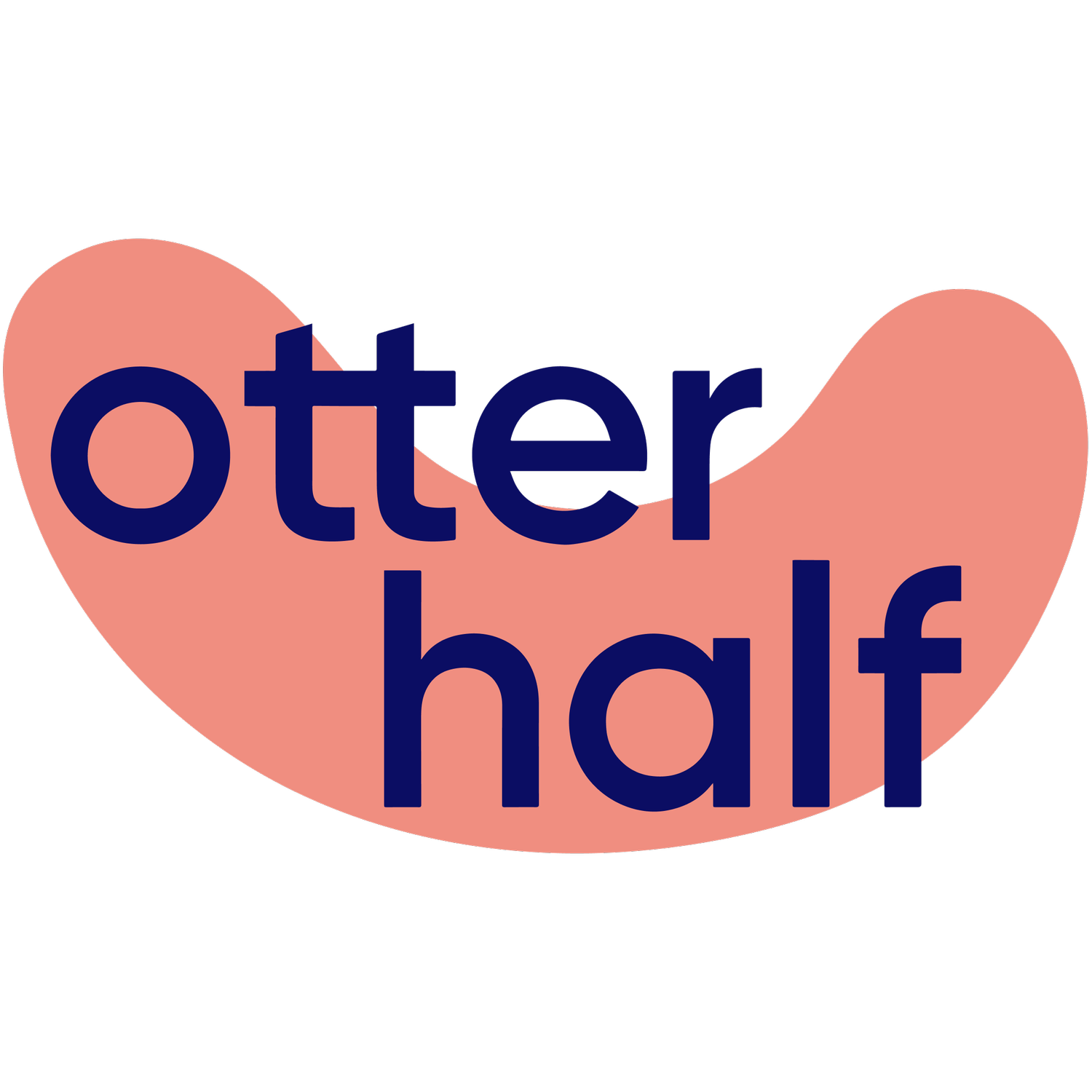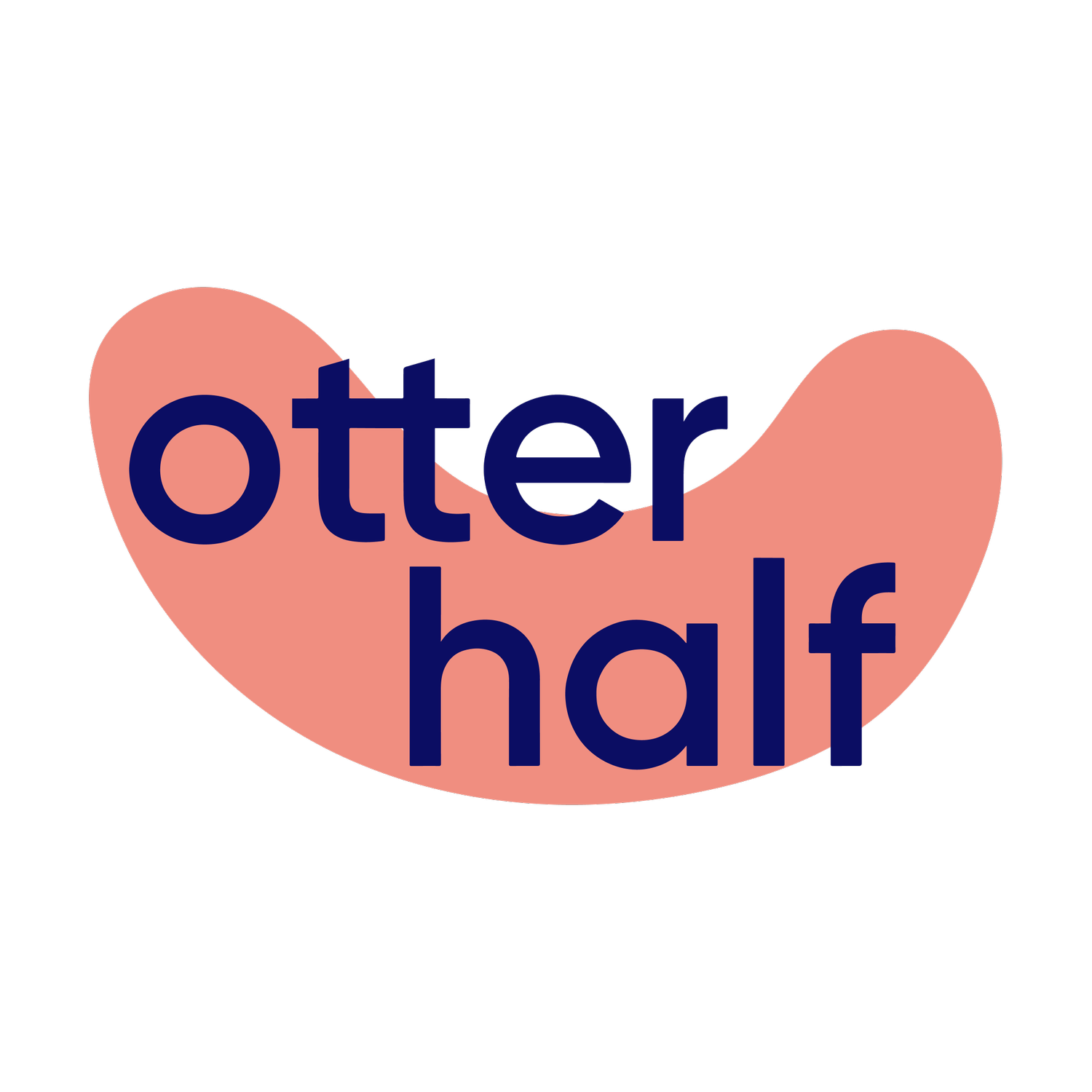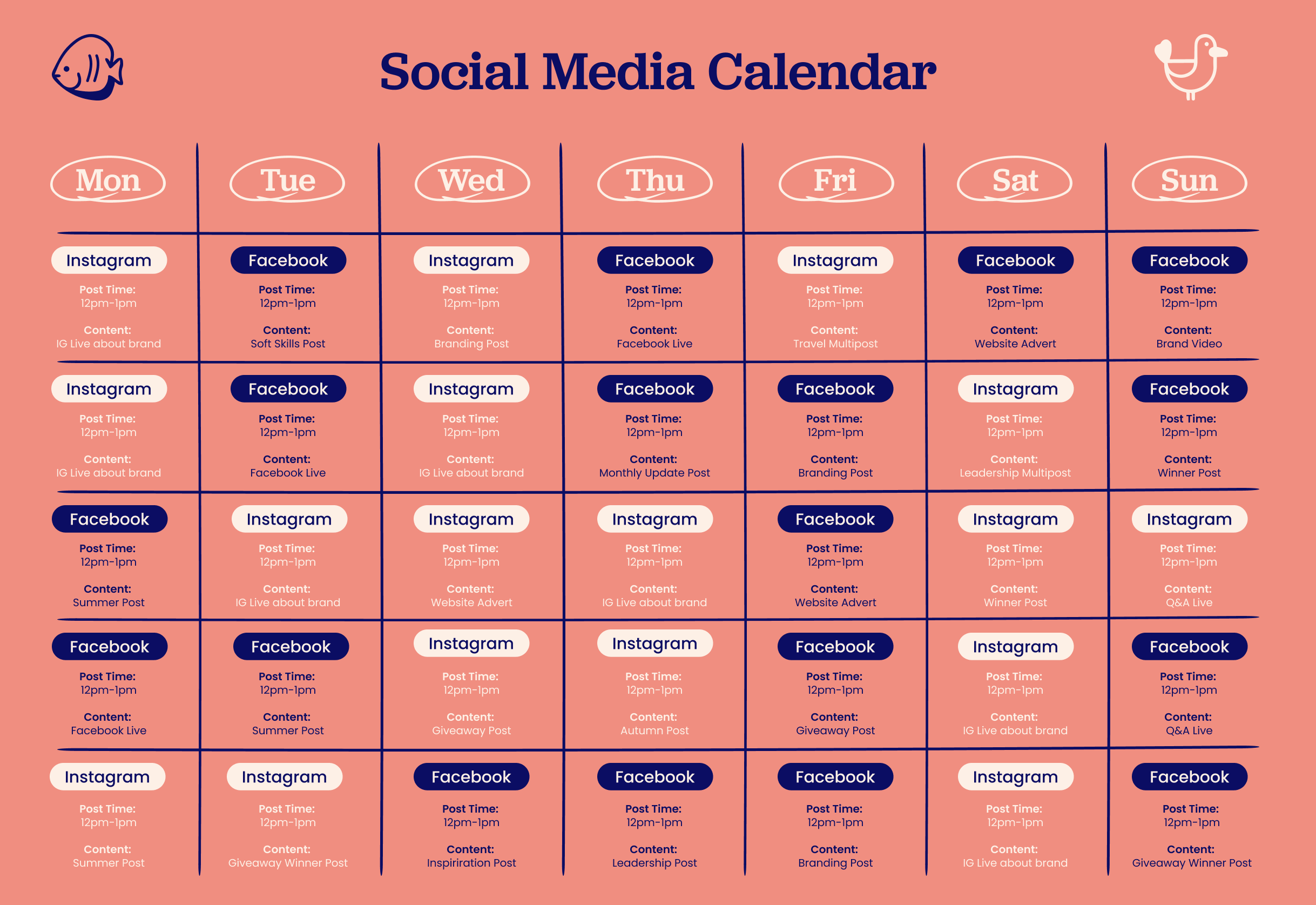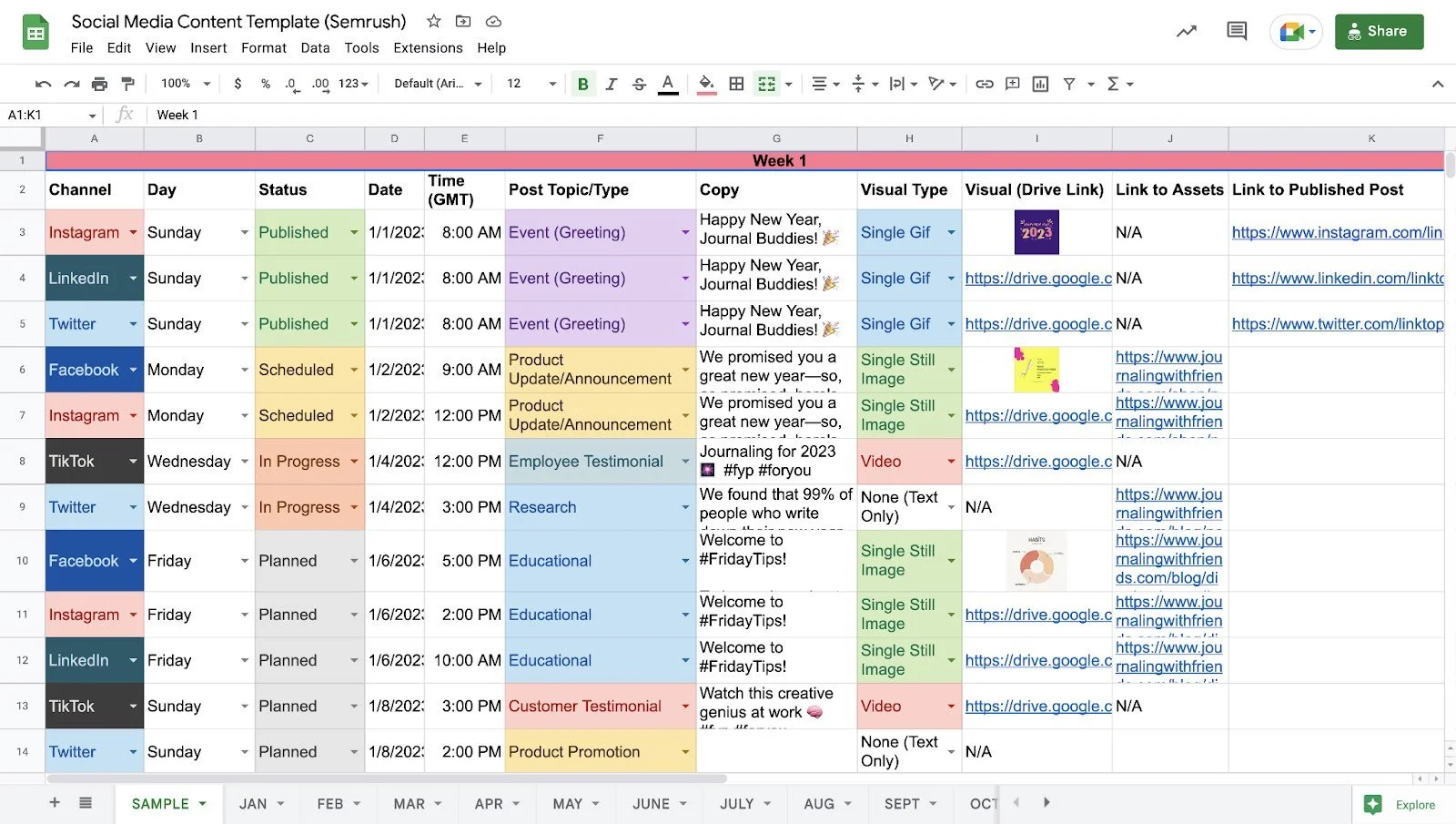Tips for building a good social content calendar
The age-old question, "What's our next post on social media?" has crossed everyone's mind at one time or another. Just as your personal and work calendars are indispensable tools, your social media accounts also require a well-structured schedule.
A social media calendar streamlines the content creation and publishing process by providing you with a clear and organised timetable. But what makes a social media content calendar so indispensable for marketers? Let’s find out.
What is a social media content calendar?
Imagine having a bird's-eye view of your entire digital marketing landscape. That's exactly what a social media content calendar offers to marketers and social media managers. It's more than just a schedule; it's your organised blueprint, outlining when and where each post will shine across platforms like TikTok, Instagram, Facebook, and more. If you’re interested, here is our take on the new-age social media apps to consider for your brand in 2023.
This structured approach is a non-negotiable for any marketing strategy. With a content calendar, you'll effortlessly juggle the demands of different platforms, keeping your brand's presence cohesive and captivating.
4 elements of an effective social media calendar
Content themes and categories
Organising your content around specific themes or categories not only provides structure but also ensures a diverse and engaging mix of posts. This gives your audience a clear expectation of what to anticipate from your brand. For example, a fashion brand can implement themes such as "Summer Trends," "Photography Tips," and "Customer #fitcheck spotlights," providing a balanced and compelling content journey.
Social media calendars should be customised for each channel, as audience behaviour on various channels can differ greatly. Check out these 5 TikTok marketing strategy tips to learn more. With a robust content calendar, you can showcase different facets of your brand and keep your audience consistently engaged.
2. Content formats
Diversifying your content formats caters to different audience preferences and maximises engagement. This includes videos, infographics, blog posts, user-generated content, and more. For example, a fitness brand may incorporate a mix of workout videos for visual learners, recipe posts for nutrition enthusiasts, and inspirational quotes for motivation seekers.
Catering to various content formats ensures that you're appealing to a wider audience base, capturing attention and resonating with different segments.
3. Posting schedule
Maintaining a consistent posting schedule is imperative for sustaining audience engagement. Consider factors such as optimal posting times for your target audience and the frequency of posts per platform. Tools like Buffer or Hootsuite can be helpful in not only scheduling but also automating posts, ensuring a steady stream of content.
Consistency establishes trust with your audience. They come to expect and look forward to your content, resulting in increased visibility and a loyal following.
4. Content calendar scheduling tools
Source: Sprout Social
Leveraging specialised software or platforms designed for content planning and scheduling is a game-changer. These tools offer functionalities for collaborative planning, scheduling, and tracking content performance. Notable examples include CoSchedule and Sprout Social to streamline your content management process.
Using these tools elevates efficiency and productivity, enabling you to focus on crafting high-quality content rather than getting bogged down by organisational tasks.
Tools & Templates
If you want to curate the best strategies while staying organized as a team, picking the right content planning tool is essential. From scheduling posts, tracking campaigns, managing approvals and measuring performance, your tool needs to compliment your team’s workflow. Here’s an overview of some of the most popular content scheduling tools.
Social Media Calendar Examples
A well-structured social media calendar should be customised to your business needs. Whether you’re a B2C brand in the middle of a launch campaign or an e-commerce brand breaking into the B2B market, your social media calendar should align with your business goals. Here are 3 examples of calendar formats tailored for different industries:
1. E‑commerce Monthly Overview
A monthly calendar helps balance product pushes, promotions, and community-building content. You’ll typically plan around sales campaigns, product drops, and seasonal moments while maintaining brand engagement between launches.
Source: ZOHO Workplace
2. B2B Weekly Planner
B2B content thrives on consistency and trust-building. A weekly planner is perfect for mapping out thought leadership posts, case studies, repurposed blog snippets, and industry commentary—often timed with newsletters or product updates.
Source: SEM Rush
3. Nonprofit Thematic Campaign
In mission-driven industries, content is often centered around thematic campaigns or awareness months. A content calendar should highlight stories, educational posts, and calls to action—all building momentum toward a clear goal.
Source: Linkedin
Content Calendar Ideas & Themes
Running out of post ideas? A well-structured content calendar is often filled with reusable themes that spark consistent engagement, helping you stay relevant on social media.
Weekly Series
Build your audience by introducing recurring weekly content:
Monday Motivation: Share inspiring quotes, employee stories or team wins
Behind-the-Scenes Thursdays: Offer a peek into your process or workspace
Founder Fridays: Personal stories, lessons, or Q&As from your brand’s founder
Tip Tuesday: Quick, actionable advice or how-tos for your products/ services
Weekend Polls: Spark engagement with simple opinion questions
2. Seasonal Hooks
Tie content to holidays, trends, and cultural moments:
New Year resolutions
Summer sales and product bundles
Back-to-school checklists or planning tips
Holiday gift guides or year-end roundups
Cultural celebrations (e.g. Lunar New Year, Pride Month)
3. User-Generated Content
Encourage your audience to co-create with you:
Repost customer reviews or testimonials
Run a hashtag challenge or campaign with giveaways
Feature fan photos or unboxing videos
Share before-and-after transformations
Spotlight your most active community members
4. Repurpose Prompts
Extend the life of existing content across platforms:
Turn blog posts into Instagram carousels
Clip podcast insights into short Reels or TikToks
Reshare high-performing posts with updated captions
Convert webinar discussions into quote graphics
Summarize newsletter tips into tweet threads
Metrics matter: Enhancing your social media strategy
In the fast-paced world of digital marketing, data is the compass that guides your strategy. Understanding the metrics that truly impact your success is key, and you can leverage tracking platforms like Google Analytics or iconosquare to help you with this. Here are three key metrics that every business and marketer should be tracking.
Engagement Rate
This metric quantifies the level of interaction your content receives, including likes, comments, shares, and clicks. A high engagement rate signifies an active and engaged community. This results in heightened brand visibility, trust, and a greater likelihood of conversions.
According to Hootsuite, engagement rates vary across different social media platforms. LinkedIn boasts the highest engagement rate at 1.53%. On Instagram, the average engagement rate stands at 1.48%, followed by X at 1.26%, TikTok at 1.20% and finally Facebook at 0.96%.
Source: Hootsuite
2. Click-Through Rate (CTR)
CTR measures how effectively your call-to-action (CTA) guides traffic to your website or landing page. A high CTR not only demonstrates that your content is engaging but also its effectiveness in driving your audience towards taking action. This action can range from making a product purchase to signing up for a newsletter. According to Statista, social media advertising typically reaches a CTR of 1.36%
3. Conversion Rate
A high conversion rate shows that your social media strategy is delivering tangible business outcomes. The conversion rate tracks the percentage of users who take a desired action, directly aligning your social media efforts with your business objectives. However, defining a good conversion rate is not as straightforward—it hinges on several factors:
Industry and type of product or service
Marketing channel
Average sales cycle length from awareness to conversion
Other considerations for marketers
Stay Agile
Source: Spotify
A content calendar provides structure, but it's your agility that allows you to trendjack on current events, trends, and shifts in audience preferences. When executed effectively, trendjacking can enhance your brand's image and contribute to achieving your marketing goals. With successful trendjacking, you can amplify discussions related to your brand, potentially gaining new followers. For instance, every year, Spotify unveils its highly anticipated #Wrapped campaign, inviting users not only to celebrate but also to assume the role of music critics, judging their friends' musical tastes. The platform provides end-of-year statistics, including top artists, songs, genres, and podcasts. It even dives into individual users' listening habits, detailing minutes spent, favourite genres, artists, and tracks.
By encouraging users to proudly showcase their musical inclinations, Spotify not only fosters a sense of belonging but also cultivates a lively community around its brand.
2. Improve tracking and analysis
Closely monitor how each post and campaign performs. This gives you crucial insights into what your audience prefers, allowing you to make informed decisions for future campaigns.
For instance, while organic reach on platforms like Facebook may have slowed down, paid ads continue to excel. This knowledge helps you focus your efforts wisely, whether through paid promotions or organic content—saving you time and resources in the long run.
3. Work with a trusted content production partner
Crafting content is enjoyable, but if you're aiming for excellence, a haphazard approach won't cut it. Relying on last-minute brainstorming sessions right before a post is due won't lead to optimal results—it's a gamble, not a strategy. Furthermore, it can undermine your content marketing efforts in the long term.
Frequently Asked Questions
What is a social media calendar template?
A social media calendar template is a pre-structured planning tool that helps you organize what content to post, when, and where. It can be as simple as a Google Sheet or as robust as a Notion or Asana board. Templates often include columns for post date, platform, copy, visuals, and goals—making it easier to stay consistent and aligned with your marketing strategy.
How far in advance should I plan?
Ideally, plan your content 2–4 weeks in advance. This gives you enough time to align posts with campaigns, promotions, or seasonal events—while still staying agile for last-minute changes or trends. For larger campaigns, planning 1–2 months ahead is recommended.
Where can I find free calendar examples?
You can find free content calendar templates on Notion, and Airtable template libraries, and platforms like HubSpot or Later.
What’s the difference between a posting calendar and an editorial calendar?
A posting calendar focuses on publishing logistics—dates, times, and platforms. An editorial calendar takes a broader view, mapping out content themes, campaign goals, and messaging strategy across all marketing channels. Both are important—but serve different planning layers.
Template Downloads & Bonus Resources
Here are some otter-tastic templates to help you get started on creating your own social content calendar:
1. Tiktok Campaign Calendar Google Sheets by OtterHalf here.
This captain calendar template is an efficient digital tool to help you plan, organise and execute your TikTok campaigns. This is well-suited to business owners, marketers and social media managers.
2. Editorial Content Planner by OtterHalf here.
Streamline your content workflow with this editorial calendar planner, excellent for marketers and content creators. Use this template to plan, organise and execute editorial strategies across your platforms.
3. Social Media Templates by Notion here.
With Notion’s template library, find a content calendar that fits your business’ needs. Use these templates to plan content, schedule your posts and analyse your engagement.
4. Social Media Planner by AirTable here.
Experience a multiview social media calendar with AirTable. This allows you to see platform proliferation, attached URLS, visuals, hashtags and copywriting all in one app, streamlining your content calendar.
Conclusion
Good content is essential to ensure your social media content aligns, and reflects your business. A cohesive content calendar allows you to stay organised, work more efficiently with your team, and grow your audience. Whether you are just getting started or managing multiple platforms, having a well-designed calendar is essential to long-term success.
The OtterHalf team works on social media content creation, management, and maintenance across platforms such as TikTok, Instagram, Facebook, and Linkedin. Deliverables include account set-up, management, static posts or video creation, and optimisation. In addition to organic efforts, we offer specialised services for paid social media marketing.
Ready to grow your business?










